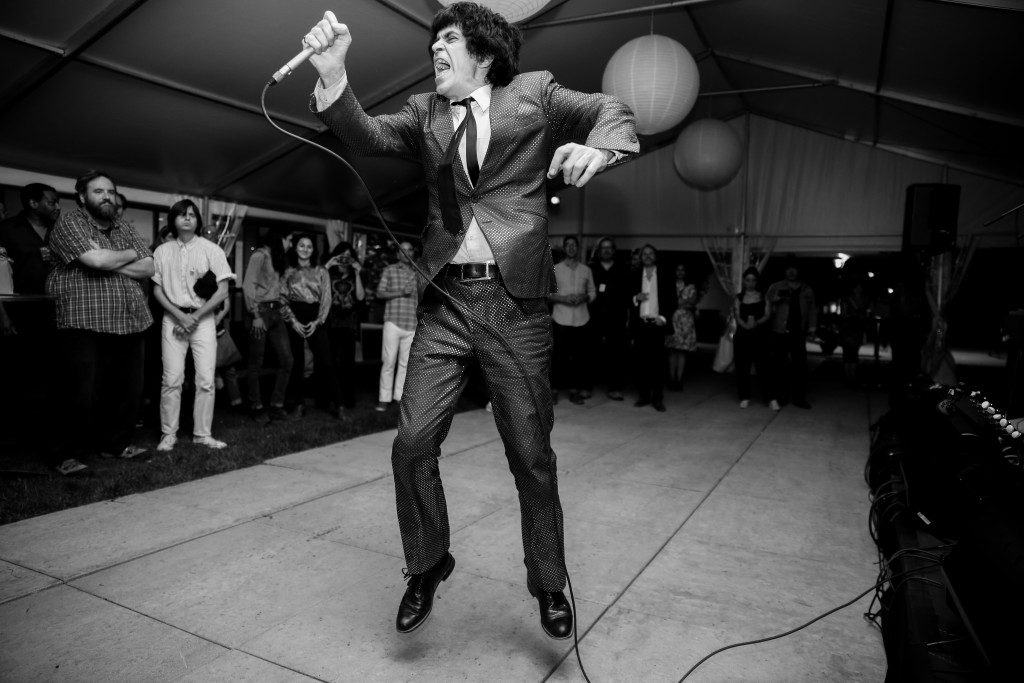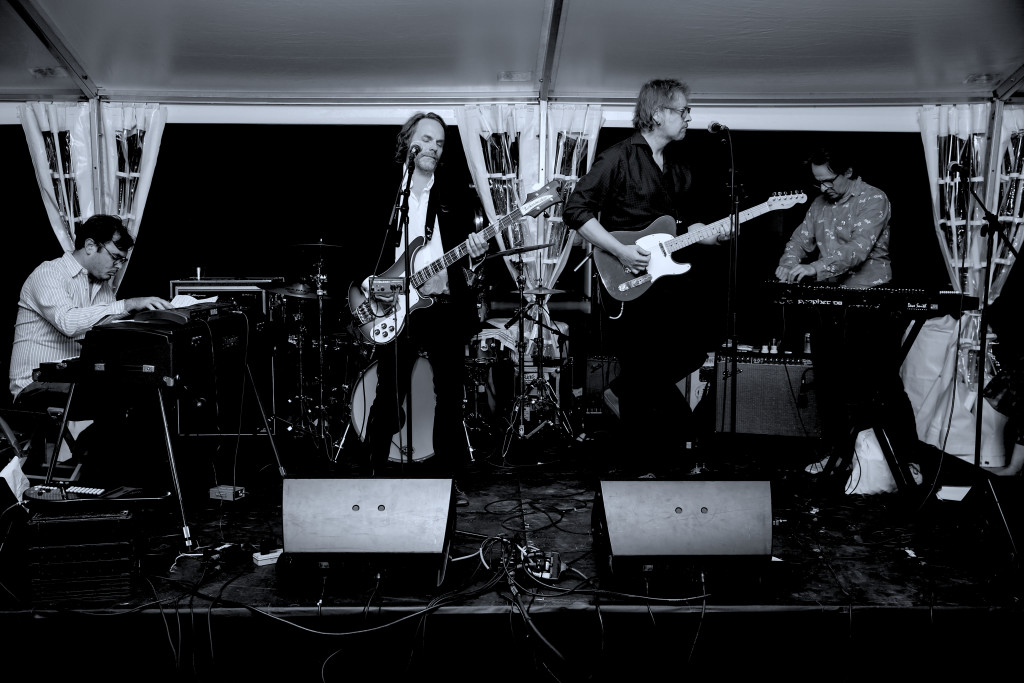Rock in a Hard Place: Art, Rock, Criticism
by Zach Cahill
A Spiritual Exegesis1
“The inner life in its abstraction from the world has as its first differentiation the one that music is connected with, namely feeling, i.e. the widening subjectivity of the self which does proceed to have an objective content but still leaves this content remaining in this immediate self-sufficiency of the self and the self’s relation to itself without any externality at all. Therefore, feeling remains the shrouding of content, and it is this sphere that music has laid claim.”—G.W.F. Hegel2
“If music is pure form, then criticism is surely its antithesis: pure argument, absolute matter. Who has ever paused to admire the shape or inflection of a review or a critical essay?”—A. O. Scott3
“The defining characteristic of a rock ‘n’ roll group is not electrification of instruments or the colonization of outsider music. Nor is it a rebel pose, outrageous hairstyle or daring footwear. The characteristic of the rock ‘n’ roll group which sets it apart from other art producers—the reason it is the most modern of all art producers—is that the group’s stature has little relation to what it produces.”—Ian F. Svenonius4
Music is exhausting. From the stand point of tempo alone we feel this—the effort just to keep up. To arrive on time, ahead of the beat, on the beat, after the beat, these are circumstances that can fray an one’s nerves. Musicians deal with this intuitive math all the time. Time, time, time. Music is a medium of pure time, yet for all its immateriality, it is nevertheless resolutely physical. In fact, it may be the most physical of all the arts—as sound waves physically impress our bodies. If this aspect of related physics is true, then music is a medium that carries another person’s thoughts and emotions into our flesh and even through it, past it; all the while marking the passage of existence. The soul, the body, time, death—things that usually fall under the purview of religion—one could say these terms borrow from the work of Wassily Kandinsky, as they concern the spiritual in art. Indeed, in Dan Graham’s essay Rock My Religion he makes an interesting connection between this physicality of music and religious ecstasy.
When one tries to write about rock ‘n’ roll and art criticism, it feels like there is a hovering cloud-like imperative, or even a directive, to perform to the reader. To electrify them. Such an undertaking— for the text to live up to its subject matter—is doomed from the start, which when broken down, is simplified to the relationship between art and music. From Kadinsky and Paul Klee, to Andy Warhol and Le Tigre, artists have pondered the relationship between the two. By now it is a rich history. Recently, Jörg Heiser diligently charted the relationship between art and pop music in his book Double Lives. reference5
But my mission here is not to ruminate on the aesthetic adjacencies of visual art and music, or offer novel insights on the dynamism that exists between them. Rather, I want to focus on what I take to be a striking touchstone among art critics (and critics that turn into curators), namely, what I take to be a near encyclopedic knowledge of music, bands both above and below ground, and ask why a critic’s mind may be particularly suited for such archival dexterity.

When writing an essay such as this, it is probably shameful, if not recklessly selfincriminating, to confess: I don’t know shit about music. At least not compared to my immediate cultural milieu here in Chicago. There is a mindboggling collection of music polymaths in Chicago—including noted jazz scholar John Corbett, who came up writing music criticism for Downbeat, and is one half of the powerhouse gallery Corbett vs. Dempsey; the former curator at the Renaissance Society and now Director of LAXART, Hamza Walker’s knowledge of a variety of music is staggering—in addition to mounting phenomenal exhibitions in Chicago during the last twenty years, he also programmed an inspired music series. Anthony Elms (who is Chief Curator at the Institute of Contemporary Art Philadelphia—yet will forever in my mind be associated with the Chicago artworld) is himself a drummer, and like Hamza has a prodigious knowledge of music. Artist Philip von Zweck ran a radio program, called Something Else, for about fifteen years, which featured sound art and avant-garde music (and who should probably be the one writing this piece), and Documenta 14 curator Dieter Roelstraete, a sometimes DJ, is an abiding lover of all things music (sidenote: Roelstraete, who is a transplant from Europe, became aware of Chicago’s vibrant culture while reading Corbett’s writing on music while in Ghent in 1994). Then there is Theaster Gates, who incorporates complex improvisational music into his performances, and whose Stony Island Arts Bank houses the Frankie Knuckles’ archive. While the genres of music concerning each of these individuals varies, the depth of knowledge does not.
It is true that not all of these folks have written criticism, but many of them have— and those that have not definitely could. But I hardly think this phenomenon is isolated to Chicago. Berlin-based critics Jan Verwoert and Jörg Heiser play in the band La Stampa, importantly titled after the Italian term for The Press.
How does one account for this interest in music by critics (and artists)? Where to start? Perhaps accounting is as good of place as any. For the cash-strapped, yet cultural savvy critic, music is an art form that one can afford, as opposed to the prohibitively expensive contemporary art market, which is beyond the reach of most.
So, if contemporary art is priced well beyond the means of the average consumer, then contemporary music provides a veritable ocean of material that is cheap by comparison. In such a sea of accessible cultural production, the music collector can acquire all the work one band creates, as well as corollary bands, tertiary bands, and sift through ephemera, origin stories, music lore, and the like. In a word, for the consumer the music industry is fairly egalitarian. Concert tickets may be out of reach, but the possibility of owning a work by a musician—a CD or download—is by comparison very manageable. This egalitarian aspect of music is no doubt appealing to the art critic who originated, according to social philosopher Jürgen Habermas, as a mediator between the institutions of museums, galleries, and the general public.5 In the eighteenth century, the role of the critic was a means to keep the people from getting scammed—but I want to be careful not to go down the rabbit hole of class. For while it obviously bears importance on the intersection between criticism and music, I feel like we might be missing something important if we do not change our lens a little. Besides, French Sociologist Pierre Bourdieu and many others have already charted this territory in great detail, and with lasting impact. To be sure, ideologies of class underlies all of this, but I want to leave that macro-perspective vantage point to one side at least for the moment and instead ask: what do critics do?

Museum of Art.
The critic is, in essence, someone whose voice in their head is heard in public. For all of his insight, I disagree with journalist and critic A.O. Scott on one point: I do think there are people who care about a well-argued piece of criticism. Though, as he says, people do not know what to do with criticism. First, the public says there is no good criticism anymore, then bemoan that their exhibitions do not get reviewed—one of two things follows: it is a negative review, in which case the reaction is the critic is reduced to having “no idea what they are talking about,” or it is a positive review, in which case, we call it “a very thoughtful review.” Repeat cycle. It is a pretty thankless endeavor. Of course, not all critical writing is well composed or reasoned, but at the very least pen is put to paper and shared in public. Too often we mistake a critic for a pitchman. The critic is not that. The critic— poor soul—is the one who has the courage (or stupidity) to think out loud in public, while the rest of the populace “keeps it to themselves” and/ or speaks behind your back. Critics do not make artist or gallerist-type money for writing, or even have stable academic appointments; the critic is, when you stop to think about it, a rather insane self-destructive role for anyone to take on. In this regard, they are somewhat like the figure of the rock star.
If Hegel is correct, and music is one of those innermost arts of the soul, then the critical mind shares its sympathy—in so much that when a critic speaks out loud, he or she is really making music. Critical interaction is a particular kind of music, more precisely: a duet. The critic picks up a riff that the artist is laying down. As a sentence is penned in response, the painting plays on, back and forth it goes.
Art, music, and criticism are not about communication (that is for marketing firms), but rather communion; spirits finding their attunement. In the end, what art, music, and criticism share are a question: how are we going to live together?
It is the answer to that question that makes a scene or an artworld—it is what allows some art works to appear on, and forces others to stay under, our radar. Through this question we meet and agree to participate in this jam session. As participants, we decide what kind of artworld we want to be a part of, and as Ian F. Svenonius points out, it is a bit like a rock group—not so much the work, but the cultural vibe, that determines our situation. We build the worlds we want to have. They are not static. They are malleable. One could argue this is why things change at all, and perhaps this is how the canon changes. I would argue that this process is not a question of taste (not exclusively the production of class distinctions), so much as it is about being in the same room together, thinking and feeling out loud. Despite the seeming love of all things virtual, this (art, rock, criticism) is still a very animal, carnal thing, which cannot really be done online.
It is only when we all risk being critics and getting up on stage that we may make new possibilities possible.
With thanks to Barry Schwabsky.
- Much of this essay grew out of a panel I was part of at EXPO CHICAGO 2017 with Jan Verwoert, Jörg Heiser, Ian F . Svenonius, and Nadya Tolokonnikova. My thanks to each of them and to Stephanie Cristello of EXPO CHICAGO and Michael Christiano of the Smart Museum for bringing together an unbelievable collection of thinkers. You can access a video of the panel on EXPO CHICAGO’s Website.
- G.W.F Hegel, Aesthetics: Lectures on Fine Art Volume II, trans. By T.M Knox, (London, Claredon Press, 1998). p. 902-3.
- A.O Scott, Better Living Through Criticism: How to Think About Art, Pleasure, Beauty, and Truth, (New York: Penguin Books, 2017). p.195.
- Ian F. Svenonius, Censorship Now! (New York: Akashic Books, 2015). p. 121. 5 Jörg Heiser’s Double Lives has yet to be released in English but you can read more about it on Art Mag by Deutsche Bank’s interview with Heiser, Hey, make something hip for us!.
- For a detailed description of how art criticism functioned in its early days, see Jürgen Habermas, The Structural Transformation of The Public Sphere.